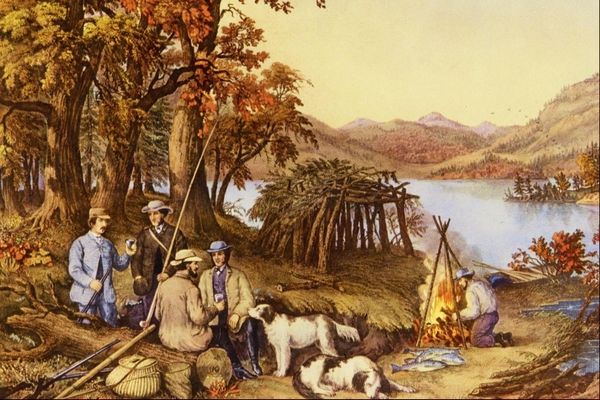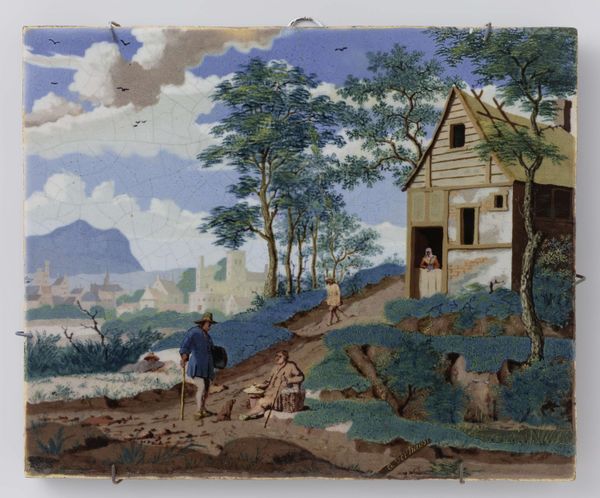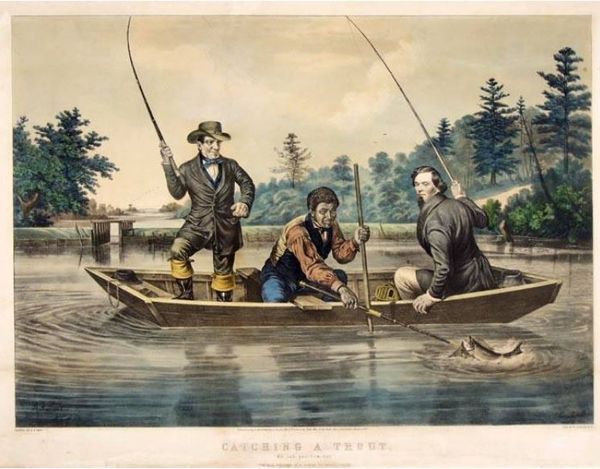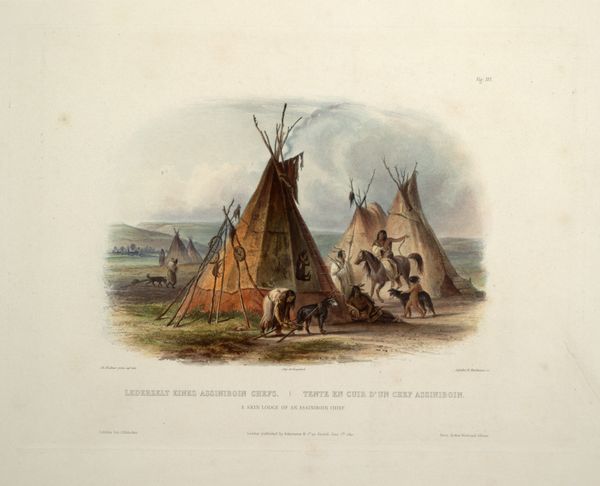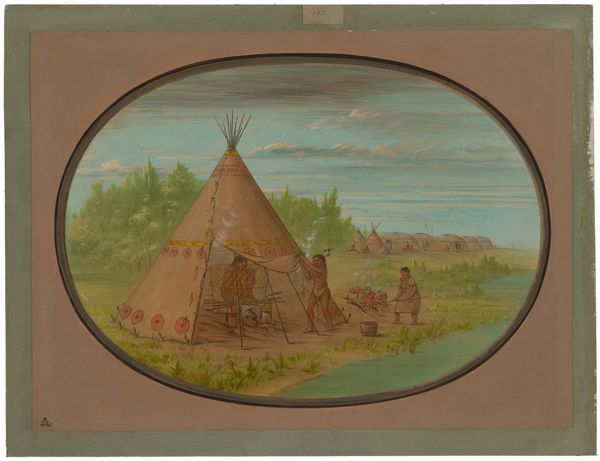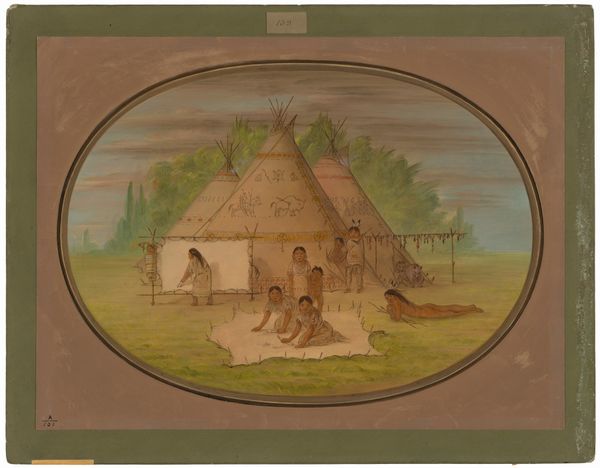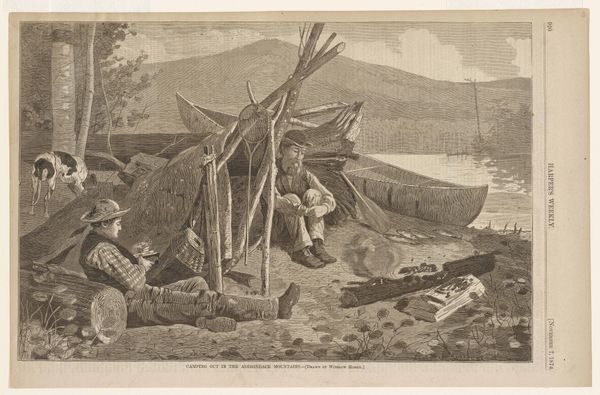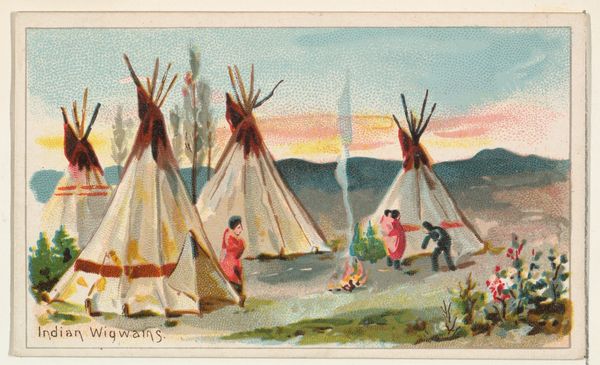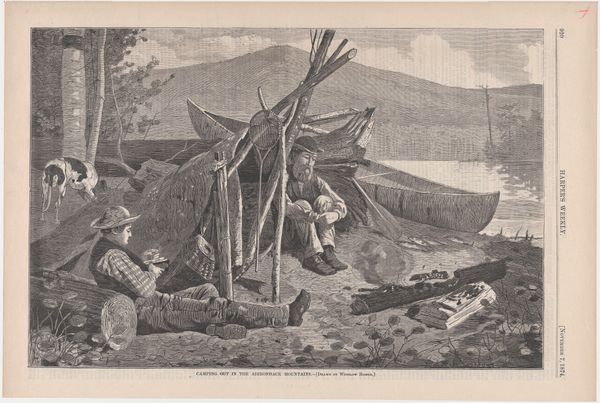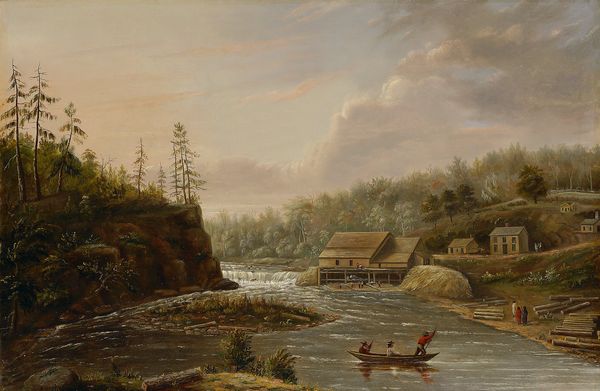
print, watercolor
# print
#
landscape
#
oil painting
#
watercolor
#
coloured pencil
#
hudson-river-school
#
genre-painting
#
watercolor
#
realism
Copyright: Public domain
Editor: Here we have "The Hunters Shanty," printed in 1861 by Currier and Ives. It looks like a tranquil scene, a small cabin nestled beside a lake with two figures in a canoe. It has this kind of calm stillness to it... How do you interpret the scene? Curator: It's a fascinating piece when you consider the visual vocabulary at play. Notice the cabin: a simple, solid structure, but wreathed in darkness. Light emanates from the fire in the foreground, beckoning and sheltering, a focal point contrasting with the gloom of the forest. It hints at both vulnerability and resilience. Editor: So the darkness around the cabin suggests vulnerability, even in this picturesque scene? Curator: Precisely! And observe how the figures in the canoe deliver something – likely their hunt – to the shore. Consider hunting as a symbolic act: a dance between provision and dominion. Does the image portray humanity living in harmony with nature or conquering it? Are those feelings evoked, as the Hudson River School often does? Editor: That’s interesting. I initially saw it as simply idyllic, but thinking about it now, there's a definite tension between the warm firelight and the encroaching shadows. It isn't entirely comforting. Curator: These prints often spoke to deeply ingrained cultural anxieties and aspirations. Are we secure or imperiled? Civilized or on the verge of succumbing to the wilderness? They remind us of our complex, evolving relationship with the natural world. Editor: I see that duality much clearer now – it's not just a pretty picture; it reflects deeper cultural themes. Curator: Exactly. Art provides mirrors to examine ourselves; seeing allows us to understand how we see. Editor: Thanks! I will remember this next time.
Comments
No comments
Be the first to comment and join the conversation on the ultimate creative platform.
